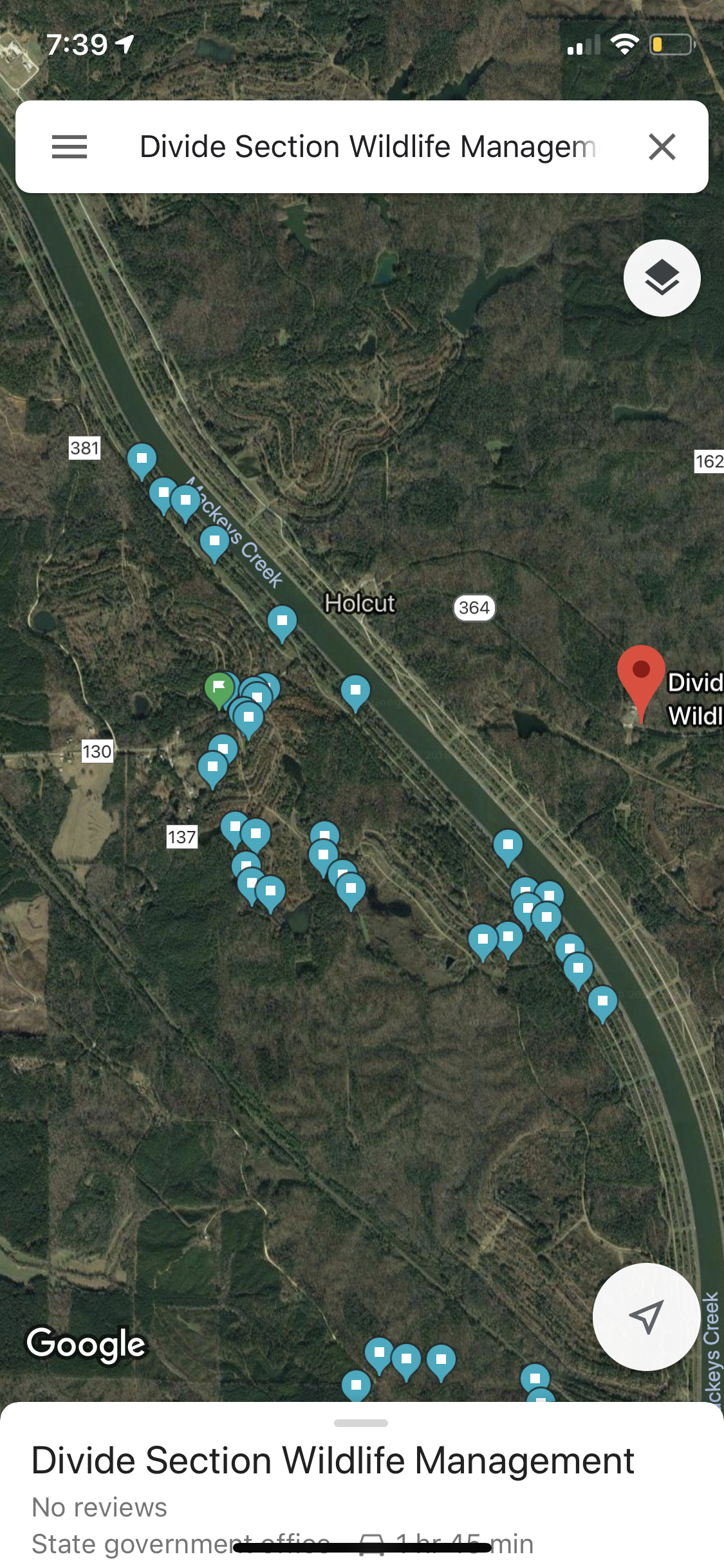12/14/2018 Divide (Section) and Conquer
Divide Section WMA is a 15,000 acre WMA along The Tenn-Tom waterway in Tishomingo and Prentiss counties near Iuka.
I was first lured here by the WMA’s prospects and history of quail habitat and harvest, since 2010, it has had the most man days in pursuit of quail and the third highest harvest behind Marion County and Chickasawhay.
My first trip here was December 14, 2018 in hopes of finding quail.
This was my first walking route, and where I should have stayed
I walked for over five miles in intermittent rain trying to find the disposal areas and quail that allegedly inhabit them. I found several with nice ponds and walked up and down the hills and grassy areas but never saw a damn bird.
One of the ponds in the disposal areas
The second part of my walk I got distracted on the terraced hills along the canal and watching the massive freight being transferred across the man made waterway.
Places to fish and duck hunt
Food plots along the Tenn-Tom
A nice walk but no quail.
The MWDFP Divide Section page describes the area as follows:
The DSWMA encompasses some 15,300 acres with approximately 5,000 acres being disposal areas. Disposal areas are where excavation and dredge material generated in the waterway construction was deposited to form a terraced rolling prairie effect. The disposal areas, approximately 32 of them, were heavily seeded in serecia lespedeza, weeping love grass, and fescue to control erosion and later planted in various hardwood tree species. The remainder of the area is in upland mixed pine/hardwood of various ages and composition.
The disposal areas were originally forested valleys which were cleared so that excavated material could be placed in them. They range in size from less than 100 acres to over 600 acres and are scattered along the length of the WMA separated by forested hills and drainage ditches. The material that was excavated is highly erodible, acidic (low pH) and void of organic material. There was also no native vegetation seed source in the excavated material from which plant succession could begin. As mentioned above, the areas were seeded in plant species that would help control erosion but they also inhibited native vegetation, especially woody species, from establishing. The attempt to reforest the disposal areas in hardwoods had very little success.
The DSWMA can be credited with initiating deer management in extreme northeast Mississippi. When the WMA was started (1983), there were very few deer in the area and no hunting clubs had formed. For the first several years, the DSWMA was closed to all deer hunting and approximately 30 adult does were stocked on the area. During this time, the adjacent landowners and hunters noticed more and more deer as the years passed and began to form hunting clubs along the WMA boundaries. Deer are now plentiful in this region to the point that antlerless harvest is a necessity to control the population. During the years of low deer numbers, the disposal areas were very good quail habitat and quail was the most hunted wildlife species, but deer soon became, and remains, the most sought after species. Wild turkey were also void in the area until they were re-stocked in the mid 1980's. The first turkey season was opened in 1993 and the population continues to expand.
Squirrel hunting can be productive if you don't mind climbing the hills, however, there are many logging roads and trails that are maintained for access. There is also some good rabbit hunting around the disposal areas and numerous winter food plots.
The DSWMA features a 'youth and handicap only' deer hunting area. This area is a 900 acre peninsula on the northwest side of Bay Springs Lake. Winter food plots are planted and there are 11 wheelchair accessible shooting houses with good vehicular access.
Several of the disposal areas have stocked ponds. All of the ponds that were stocked have largemouth bass and bluegill, some also have channel catfish. A few of these ponds are accessible seasonally by vehicle, others are walk-in only.









